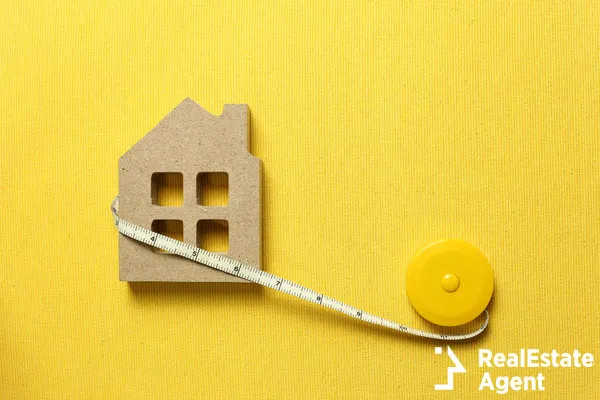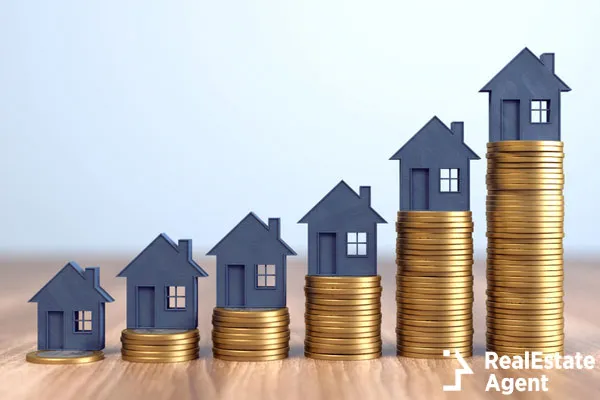
Did you know that American homes are in the top tier globally when it comes to size? Well, it shouldn’t come as a surprise, seeing as America is defined by bigness. Whether we are talking about cars, food portions, the defense budget, or the amount of waste we produce, America is worldwide famous when we consider the size. Homes are simply following the pattern, but this obsession with size isn’t healthy, sustainable, or economically approachable in many cases.
While over the past few years, there has been a decrease in square footage for houses, in 2019, the value was 2,300 square feet, but in 2020 it jumped back to 2,400. The logic behind these numbers can not be easily explained because several factors are influencing the result. The steady increase in house size is related to these factors, from politics to economics, history, and culture. From the complicated equation, we come up with what people consider normal regarding square footage in their homes.
Road Paved to Bigger Homes
One thing rebutted in studies on this subject is the importance of a country’s size to the average size of homes. These two are unrelated because if we compare country and house size in Russia, another big country, the story is different from the US. The same goes for Kazakhstan. What did influence the increasing home size in America are government policies.
Over the past century, there has been a governmental influence steering Americans towards the single-family home. This, coupled with the Federal Housing Administration in 1934, all the way to zoning mandated of individual towns and cities, suburbs were promoted as part of the American Dream. Sure, there isn’t anything stating that homes should be bigger, but economics had to do something as well.
Economical Aspect

The next stage of the road towards an increase in average square footage for American homes was how people were guided to see their houses. If a house is firstly a financial asset, and secondly, a home, that means that the home has value. And with the appreciation of that value, there is profit potential. Sure, that is what the entire real estate industry is based on, but there should be a line between what an individual needs and what they have.
An individual who buys a 4-bedroom single-family home that would accommodate a family of four with an extra guest bedroom would only use the entire space when the whole family lives there. As it is custom in American culture, the children will move by the time they’re 20. If the marriage lasts and no tragedy strikes the household, two people will be left with a 4-bedroom home. These two people will use one bedroom and the other necessary rooms (bathroom, kitchen, living room). They might host their children occasionally, but they won’t use 100% of the space year-round. So they will downsize and gain a profit if the market is healthy and has appreciated over the years.
Suburban Expansion
In American history, the period of suburban expansion coincides with the era of automobiles. Cars made it possible to live further away from the workplace or the cities, which directly led to a growth in suburbs. Land further from the city was cheaper, which translated to more land and bigger homes. Looking for a second in Europe, we can see that the expansion of suburbs did not coincide with the era of automobiles. European cities were already large by the time automobiles were commonly available. Several limitations were already in place, whether they be geographical, man-made fortifications, and other mechanisms of control imposed on the way these cities grew. This did not apply to America, a vast land yet uncharted, free to be explored and molded by the needs of those inhabiting it.
It became even easier to reach the city centers with the development of highways, and car dependency molded Americans to think that driving half an hour to work is normal. With limited public transportation, cars broaden the horizons, and living away from the city center wasn’t considered a con for these communities.
Keeping up with the Jones’s

Space is part of American culture, and this translates to bigger houses. There is also that part of the American dream that results in people always wanting more. While usually this is attributed to wealthy countries and America is high up on that list, it isn’t a standard given that both Japan and the United Kingdom are rich countries. However, American culture also deals with what people consider normal, and this aspect is linked directly to what people see in their friends, neighbors, and co-workers.
Many owners of larger homes are satisfied with the size of their homes, but this satisfaction is often short-lived. For example, in a neighborhood of average-sized homes, those dwelling in the largest homes will lose satisfaction if homes larger than theirs are built on their block. When this happens, they will start looking for bigger homes even if they don’t need the extra space.
Bigger isn’t Better
Taking a closer look at our lifestyle and how the expansion of human needs impacts our environment, we can see why bigger isn’t better. But it’s not only about the environment. Several negative impacts come from bigger everything. Whether it’s a bigger home, a bigger car, a bigger commute, or a bigger closet, this need to always have more can be linked to many economic and social issues. A famous quote says it better than I ever could: “Poverty exists not because we cannot feed the poor, but because we cannot satisfy the rich.”
Once you start thinking about what you actually need to have a good and fruitful life, you will understand that around half of what you currently own is unnecessary. Maybe a minimalist lifestyle does not fit everyone but consider your clothes at least. How many clothing items have you not used in the past six months? What about the past year or several years? Those are all possessions that you don’t use or need. Those are just possessions that occupy space in your home, and an eco-friendly shift of your wardrobe will make a big difference. When you think about the need for space in your home, you should switch up the perspective. We don’t need more storage space; we need less stuff to fill up our homes needlessly. For help with the amount of “stuff” you own, look into the KonMari art of decluttering your life.
Environmental

Our environment makes it possible for us to live. It provides us with everything we need to survive. This isn’t done by our bank account, our jobs, our social status, or the size of our homes. Humans need a roof over their heads, food, water, air, and social connection to actually live. Everything else is just static that results in a polluted environment. We aren’t saying that we should live as our ancestors lived in wooden huts that housed a dozen people, but we should understand that we don’t need as much as we have. One reason for that is the environment, as the need for environmental planning becomes urgent.
The sprawl of our communities makes us occupy more space and use more resources. We live half an hour away from the city in large houses with big yards mostly covered in lawn instead of a welcoming habitat for flora and fauna. This occupies land that we could otherwise use for planting trees, growing crops, or livestock. We drive 30 minutes to work and back every day. Covering that distance uses a considerable amount of fossil fuel while living in the city could result in no fossil fuel, depending on how many blocks away you live from your workplace. Instead of alternative means of transportation (carpools, buses, bicycles, or walking), we only rely on cars, and we own more cars per capita than any other nation in the world. All of this results from our suburban sprawls versus a vibrant downtown and our modern way of life.
Economical
A simple math calculation will tell you that maintaining a 700 square foot apartment is more affordable than paying all the maintenance costs of a single-family 2,000 square foot home. Of course, there are instances where a house in the suburbs is more affordable than a condo downtown, but consider all the expenses for a second. Aside from maintenance fees, you can add gas money (work, school, grocery trips), insurance, cost of amenities, cost of possessions (a more prominent place comes with more extensive storage that can be filled up - a smaller place allows for fewer possessions).
There is no way the expenses from a condo could be higher than those of a single-family suburban home at the end of the year. By all means, add to the calculation all the outing’s you’ll venture on, given that you won’t have your backyard. The Old World doesn’t have an issue with this because it doesn’t rely on automobiles as much. It recycles housing in city centers giving residents access to downtown housing. They also have harsher limitations to building on agricultural or undeveloped land.
Social

Having a bigger home doesn’t satisfy any dweller if it is empty. There are many instances where owners of large houses across the US are trying to sell their McMansions, but nobody wants an 8-bedroom home. There is no market for them anymore, and in these situations, those homeowners might even experience a significant loss when they manage to sell. The more space you have that you don’t use, the more significant your economic burden will be and the less satisfied you are bound to be. Smaller homes also provide extra comfort as the family is closer together, bonds are tighter as they spend more time in each other’s company, just like the Danish art of Hygge. Living with each other isn’t as personal if you share a 2,400 square feet home with your spouse to get lost in.
Conclusion
Especially in large and high-density metropolitan areas, there is a need for more affordable and reasonably sized homes. Whether they are townhomes or apartment complexes, people are trying to stop relying on mortgages or limit the amount of money they borrow for their home purchases. The newer generations may desire freedom starting with the Millennials, but they don’t translate that into a single-family home. Instead of being chained to a mortgage for 30 years with a single-family home in the suburbs, they buy or rent a small condo that they can afford, allowing them to be close to everything they need from life, whether this is nightlife, work, friends, school, or nature.
Living small is starting to make its way into America, and the change could significantly impact the real estate market as we know it. But just like it did in the past, the market can shift, change and alter to fit the demands. The real estate market has been through several struggles, and having more people looking for homes won’t be such a tough pill to swallow as it will only lead to more sales. The only problem here is supply. But the shift is already happening with metropolitan areas shifting towards a work-play-live concept that gives people everything they need close to their home, among highly walkable neighborhoods.
Let us know in the comments section below what your thoughts are on the subject. Whether you consider the environmental, economic, or social aspects of the housing industry or not, the way we live our lives directly affects how houses are built. Like & Share this article with friends and family that might be considering moving in the near future.
















Have a question or comment?
We're here to help.